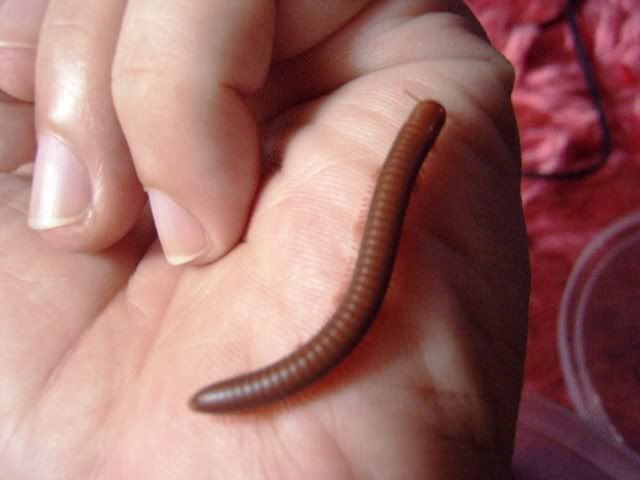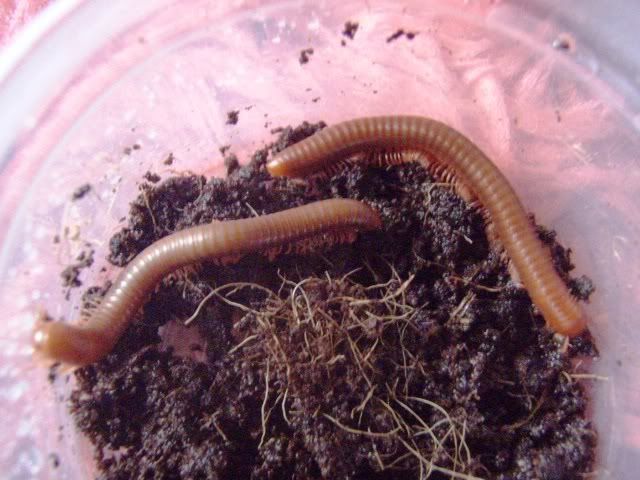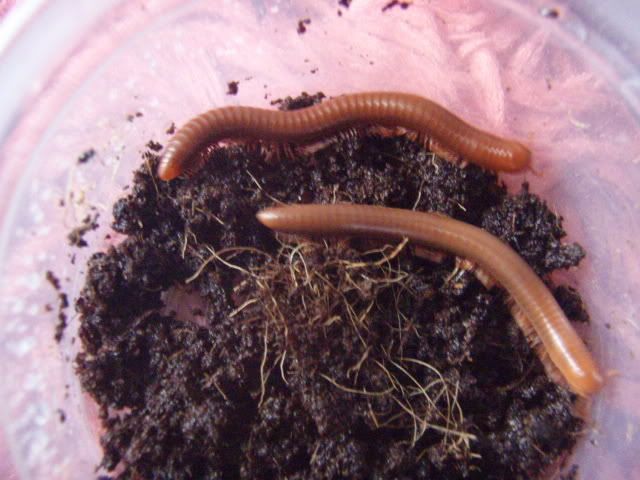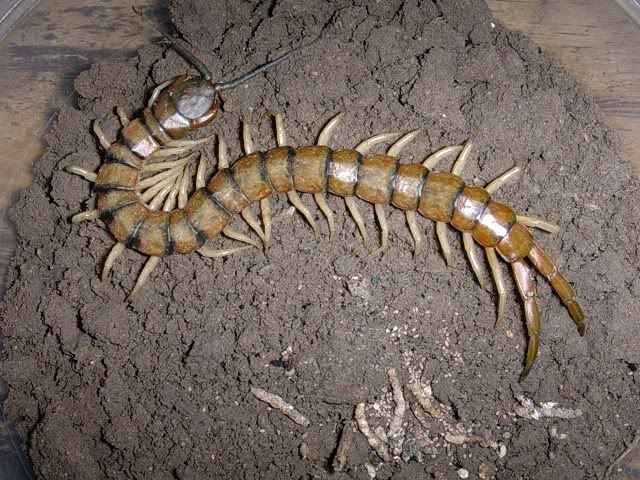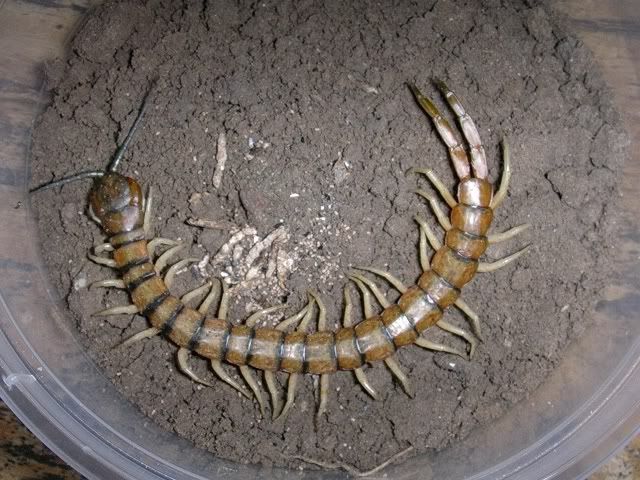Philippines Pedes ID pls.
- Thread starter johnny888
- Start date
Thanks a lot Blaster!It's Apheloria sp. I think. Way too cool.
- Joined
- Jun 11, 2007
- Messages
- 668
Pahinge naman! 
Hehehe!Pahinge naman!
chanivan21
Arachnopeon
- Joined
- May 1, 2007
- Messages
- 8
hey ahas
punta ka dito sa philipines papakitaan kita ng brown millipede na nakita ko.... sir jhonny pag uwi nyo papakita ko sa inyo ang new caught rown millipede ko....^_^ i caught a new millipede so bad i lost my digi cam on the beach.. on sunday im going to hunt sa antipolo........
punta ka dito sa philipines papakitaan kita ng brown millipede na nakita ko.... sir jhonny pag uwi nyo papakita ko sa inyo ang new caught rown millipede ko....^_^ i caught a new millipede so bad i lost my digi cam on the beach.. on sunday im going to hunt sa antipolo........
Last edited:
- Joined
- Jun 11, 2007
- Messages
- 668
Maybe next year guys.  After I get married.
After I get married.
- Joined
- Sep 8, 2005
- Messages
- 173
Hi,
Nice millipedes in your backyard
The small poldesmid does not belong to the genus Apheloria (north american genus of the family Xystodesmidae). It's Orthomorpha coarctata (family Paradoxsomatidae), a synathropic wide spread species in the tropics of the world like Oxidus gracilis. You can easily distinguish it fom the other species of the philippines by the well developed keels on the first segments and only one furrow on the tergites.
The species of the last picture belongs to the genus Trigoniulus. There are several species described for the philippines, but these are eventually varities of Trigoniulus corallinus (like in other cases), also a widespread species in the tropics.
The colourful species belongs the the order Spirobolida. Maybe it's Banosolus philippinus. To be sure I need a better pic of the first segments (lateral view). In Banosolus, the headshield/first segment do not exceed below the second segment and is somewhat acute compared to the other genera of the philippines. Looks a bit like that on one pic
Nice millipedes in your backyard
The small poldesmid does not belong to the genus Apheloria (north american genus of the family Xystodesmidae). It's Orthomorpha coarctata (family Paradoxsomatidae), a synathropic wide spread species in the tropics of the world like Oxidus gracilis. You can easily distinguish it fom the other species of the philippines by the well developed keels on the first segments and only one furrow on the tergites.
The species of the last picture belongs to the genus Trigoniulus. There are several species described for the philippines, but these are eventually varities of Trigoniulus corallinus (like in other cases), also a widespread species in the tropics.
The colourful species belongs the the order Spirobolida. Maybe it's Banosolus philippinus. To be sure I need a better pic of the first segments (lateral view). In Banosolus, the headshield/first segment do not exceed below the second segment and is somewhat acute compared to the other genera of the philippines. Looks a bit like that on one pic
Last edited:
Hi millipeter, thanks for the info.The thruth is that i don't know much about our local species and it it only now that i am starting to appreciate the beauty of these beautiful creatures.I could really use all the inputs.:razz:Hi,
Nice millipedes in your backyard
The small poldesmid does not belong to the genus Apheloria (north american genus of the family Xystodesmidae). It's Orthomorpha coarctata (family Paradoxsomatidae), a synathropic wide spread species in the tropics of the world like Oxidus gracilis. You can easily distinguish it fom the other species of the philippines by the well developed keels on the first segments and only one furrow on the tergites.
The species of the last picture belongs to the genus Trigoniulus. There are several species described for the philippines, but these are eventually varities of Trigoniulus corallinus (like in other cases), also a widespread species in the tropics.
The colourful species belongs the the order Spirobolida. Maybe it's Banosolus philippinus. To be sure I need a better pic of the first segments (lateral view). In Banosolus, the headshield/first segment do not exceed below the second segment and is somewhat acute compared to the other genera of the philippines. Looks a bit like that on one pic
Hi millipeter, thanks for the info.The truth is, i don't know much about our local species and it is only now that i am starting to appreciate the beauty of these creatures.I could really use all the inputs.:razz:Hi,
Nice millipedes in your backyard
The small poldesmid does not belong to the genus Apheloria (north american genus of the family Xystodesmidae). It's Orthomorpha coarctata (family Paradoxsomatidae), a synathropic wide spread species in the tropics of the world like Oxidus gracilis. You can easily distinguish it fom the other species of the philippines by the well developed keels on the first segments and only one furrow on the tergites.
The species of the last picture belongs to the genus Trigoniulus. There are several species described for the philippines, but these are eventually varities of Trigoniulus corallinus (like in other cases), also a widespread species in the tropics.
The colourful species belongs the the order Spirobolida. Maybe it's Banosolus philippinus. To be sure I need a better pic of the first segments (lateral view). In Banosolus, the headshield/first segment do not exceed below the second segment and is somewhat acute compared to the other genera of the philippines. Looks a bit like that on one pic
Last edited:
Very nice pede Johnny. I wished the local polymorphas were in my yard, plumb laziness forbids me to take any hikes up the nearby hills to get them. These are hills surrounded on all sides by suburbs, when I collect I want some sanctity to be one with nature not busy streets and a MacDonalds seven-ten blocks away. I want local pedes by door delivery. Hehehe. 
Anyways, enough of my rant. I ain't going to attempt to ID this one either I'll leave it up to Steven (or anyone that has greater familiarity).
Anyways, enough of my rant. I ain't going to attempt to ID this one either I'll leave it up to Steven (or anyone that has greater familiarity).
Hi Selenops...I know exactly what you mean...hehehe...:razz:Very nice pede Johnny. I wished the local polymorphas were in my yard, plumb laziness forbids me to take any hikes up the nearby hills to get them. These are hills surrounded on all sides by suburbs, when I collect I want some sanctity to be one with nature not busy streets and a MacDonalds seven-ten blocks away. I want local pedes by door delivery. Hehehe.
Anyways, enough of my rant. I ain't going to attempt to ID this one either I'll leave it up to Steven (or anyone that has greater familiarity).
When I was a child I lived within bicycling distance to Mt Rubidoux, which has a bicycle trail winding up and around to the top. But was I enjoying the scenery and mother nature, no, I was walking off the paved trail, exploring, and turning over stones. It is crawling in both HUGE S polymorpha and Jerusalem Crickets. I mean we're talking upwards of 7" maybe more. On rare occassions I caught both a nightsnake and ringneck snake, and an occassional tarantula.
Now as a 30 something adult, you couldn't pay me to do it especially the general geography and locale of the "mountain" and I live much farther away now. I need to find a collecting area more open and less civilized.
Now as a 30 something adult, you couldn't pay me to do it especially the general geography and locale of the "mountain" and I live much farther away now. I need to find a collecting area more open and less civilized.
- Joined
- Sep 12, 2002
- Messages
- 2,553
Hi MillipeterHi,
Nice millipedes in your backyard
The small poldesmid does not belong to the genus Apheloria (north american genus of the family Xystodesmidae). It's Orthomorpha coarctata (family Paradoxsomatidae), a synathropic wide spread species in the tropics of the world like Oxidus gracilis. You can easily distinguish it fom the other species of the philippines by the well developed keels on the first segments and only one furrow on the tergites.
The species of the last picture belongs to the genus Trigoniulus. There are several species described for the philippines, but these are eventually varities of Trigoniulus corallinus (like in other cases), also a widespread species in the tropics.
The colourful species belongs the the order Spirobolida. Maybe it's Banosolus philippinus. To be sure I need a better pic of the first segments (lateral view). In Banosolus, the headshield/first segment do not exceed below the second segment and is somewhat acute compared to the other genera of the philippines. Looks a bit like that on one pic
What about this Philippine millipede:
http://www.bidabug.org/Forum/index.php?showtopic=874&pid=2350&st=0&#entry2350
Any info?
Here is a site I found with pics of Mt Rubidoux.
I can catch some massive beauties here and maybe I will and barter'em here at Arachnoboards. A relatively small mountain and these pics must be late spring or summer, rest the year the mountain is clothed in tall green grasses.
On the eastside a biketrail that's forked and winds around both sides of the mountain. You can see the paved bike trail in some of the pics.
I can catch some massive beauties here and maybe I will and barter'em here at Arachnoboards. A relatively small mountain and these pics must be late spring or summer, rest the year the mountain is clothed in tall green grasses.
On the eastside a biketrail that's forked and winds around both sides of the mountain. You can see the paved bike trail in some of the pics.
- Joined
- Apr 29, 2005
- Messages
- 525
Beautifull centipedes!!!
Can you send me some?
Can you send me some?
I remember walking the trails of some small mountains in our province before but not to look for inverts but for some potential bonsai materials.It was only in 2003 when I started to have the passion for creepy crawlers after seeing for the first time a very nice troglodyte specimen at the zoo in Binangonan Rizal in the Philippines.Now,I started walking the same trail again,but this time I am looking for some beauties hidden under the stones and logs.When I was a child I lived within bicycling distance to Mt Rubidoux, which has a bicycle trail winding up and around to the top. But was I enjoying the scenery and mother nature, no, I was walking off the paved trail, exploring, and turning over stones. It is crawling in both HUGE S polymorpha and Jerusalem Crickets. I mean we're talking upwards of 7" maybe more. On rare occassions I caught both a nightsnake and ringneck snake, and an occassional tarantula.
Now as a 30 something adult, you couldn't pay me to do it especially the general geography and locale of the "mountain" and I live much farther away now. I need to find a collecting area more open and less civilized.
A very beautiful place indeed, Selenops.Here is a site I found with pics of Mt Rubidoux.
I can catch some massive beauties here and maybe I will and barter'em here at Arachnoboards. A relatively small mountain and these pics must be late spring or summer, rest the year the mountain is clothed in tall green grasses.
On the eastside a biketrail that's forked and winds around both sides of the mountain. You can see the paved bike trail in some of the pics.


